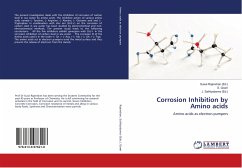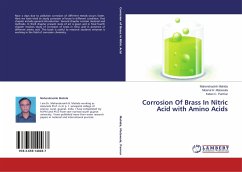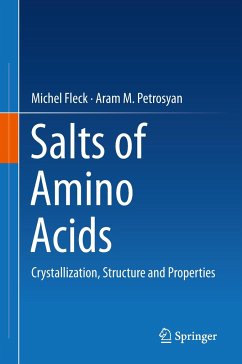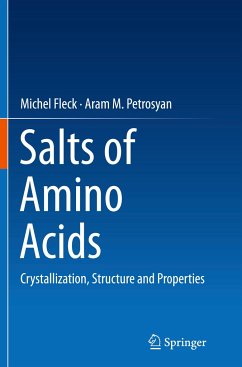
Transport Properties of Various Amino Acids and Peptides
Versandkostenfrei!
Versandfertig in 6-10 Tagen
36,99 €
inkl. MwSt.

PAYBACK Punkte
18 °P sammeln!
The detailed three-dimensional structure of proteins and nucleic acids provides critical information about the molecules but they provide no information about the stability of a molecule or the energetics of its interactions. The interactions of water with the various functional groups of proteins play crucial role in determining the conformational stability of proteins (Chalikian et al.,1994, Murphy et al. 1998 & Sorenson et al., 1999). Due to the complex conformational and configurational three-dimensional structures of proteins direct investigations of the solute / solvent effect on these b...
The detailed three-dimensional structure of proteins and nucleic acids provides critical information about the molecules but they provide no information about the stability of a molecule or the energetics of its interactions. The interactions of water with the various functional groups of proteins play crucial role in determining the conformational stability of proteins (Chalikian et al.,1994, Murphy et al. 1998 & Sorenson et al., 1999). Due to the complex conformational and configurational three-dimensional structures of proteins direct investigations of the solute / solvent effect on these biological macromolecules are very challenging. However the amino acids, peptides and their derivatives which are building blocks of proteins and mimic some aspects of proteins have been extensively used to characterize the detailed interactions of the atomic groups that comprise proteins. The side chain groups of the amino acids residues provide a very important range of properties, from hydrophilic to hydrophobic groups. The protein hydration is very important in elucidating the structure and function of protein in aqueous solutions.







![Supramolecular Interaction of Calix[4]arenes & Amino Acids Cover Supramolecular Interaction of Calix[4]arenes & Amino Acids](https://bilder.buecher.de/produkte/45/45656/45656737n.jpg)




